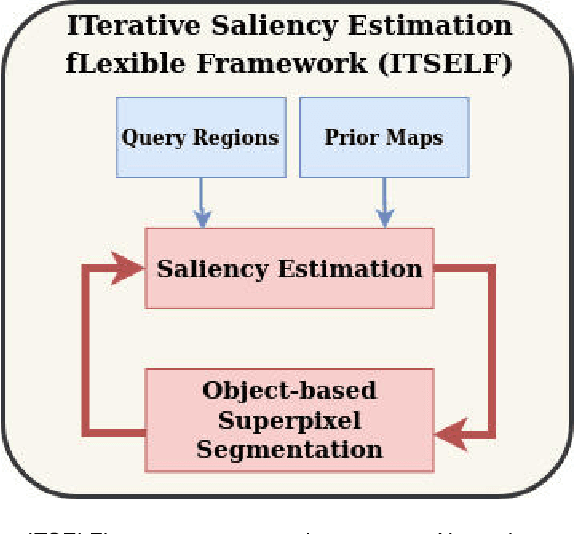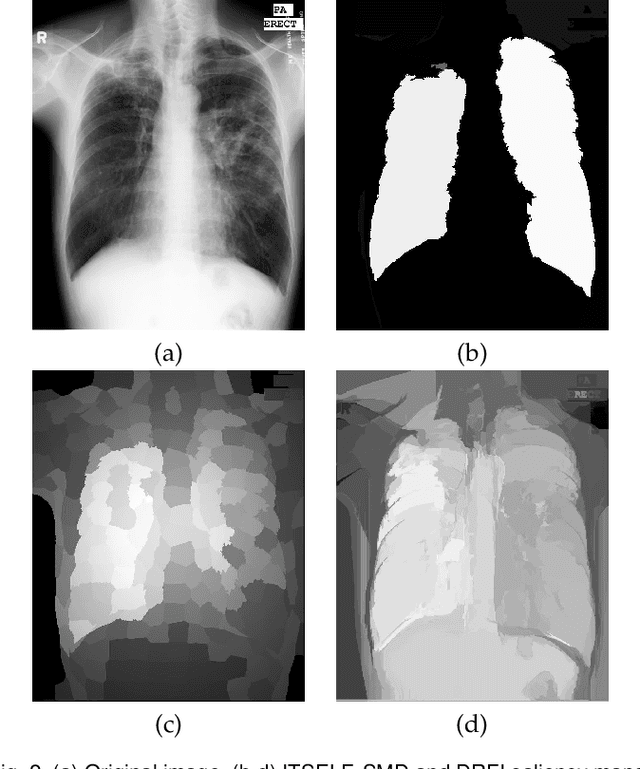ITSELF: Iterative Saliency Estimation fLexible Framework
Paper and Code
Jun 30, 2020



Saliency object detection estimates the objects that most stand out in an image. The available unsupervised saliency estimators rely on a pre-determined set of assumptions of how humans perceive saliency to create discriminating features. By fixing the pre-selected assumptions as integral part of their models, these methods cannot be easily extended for specific settings and different image domains. We then propose an superpixel-based ITerative Saliency Estimation fLexible Framework (ITSELF) that allows any number of user-defined assumptions to be added to the model when required. Thanks to recent advancement on superpixel segmentation algorithms, saliency-maps can be used to improve superpixel delineation. By combining a saliency-based superpixel algorithm to a superpixel-based saliency estimator, we propose a novel saliency/superpixel self-improving loop to iteratively enhance saliency maps. We compared ITSELF to two state-of-the-art saliency estimators on five metrics and six datasets, four of which are composed of natural-images, and two of biomedical-images. Experiments show that our approach is more robust than the compared methods, presenting competitive results on natural-image datasets and outperforming them on biomedical-image datasets.
 Add to Chrome
Add to Chrome Add to Firefox
Add to Firefox Add to Edge
Add to Edge